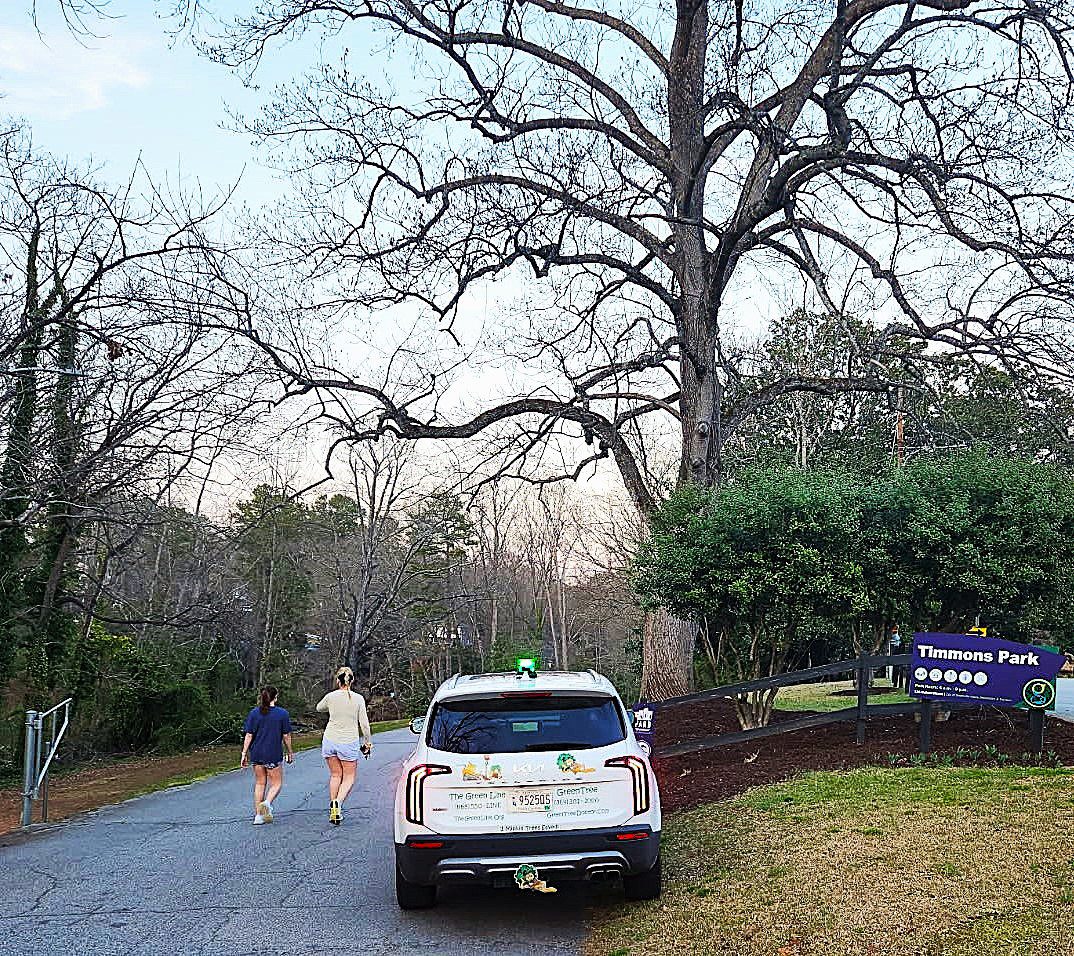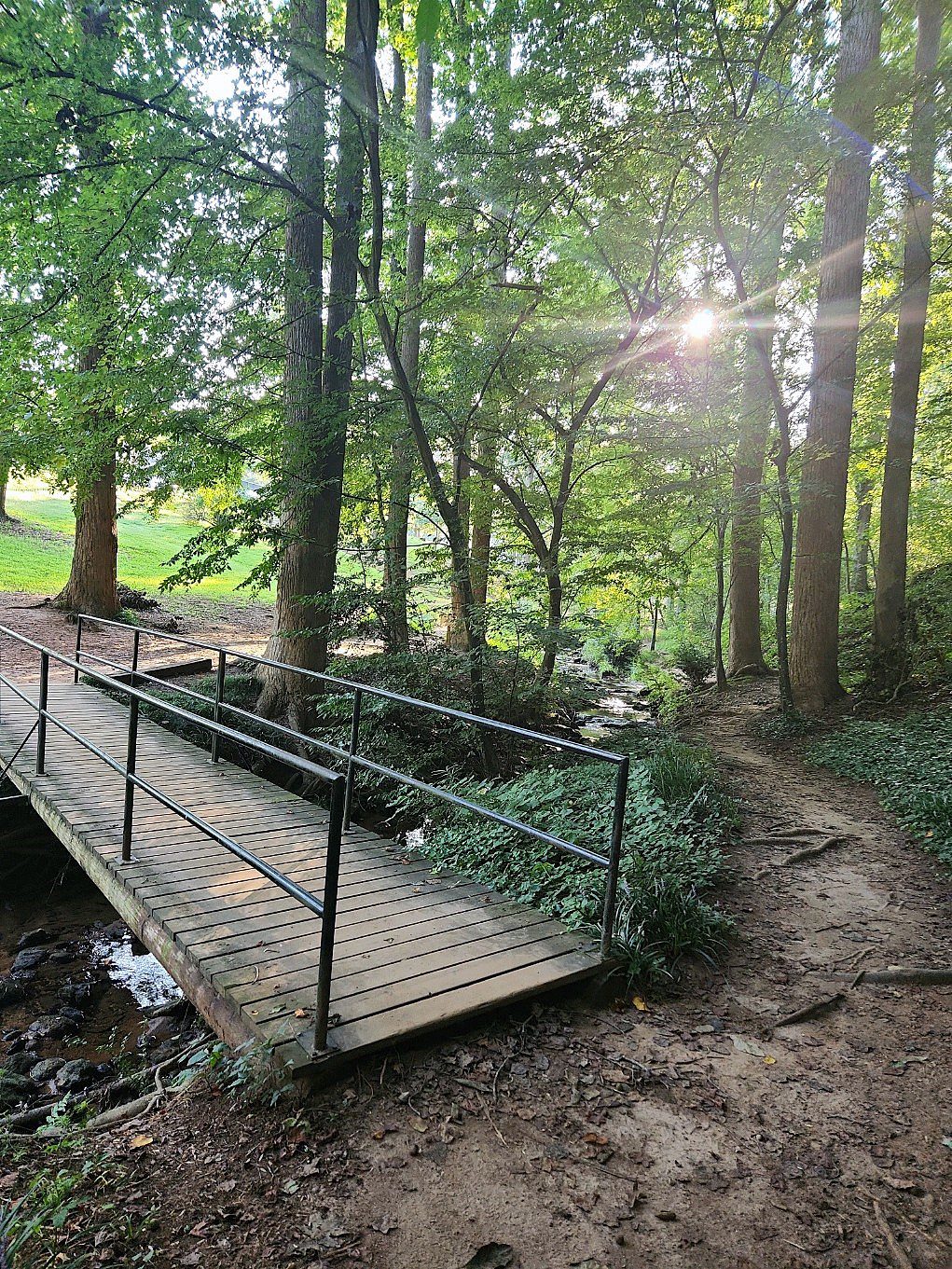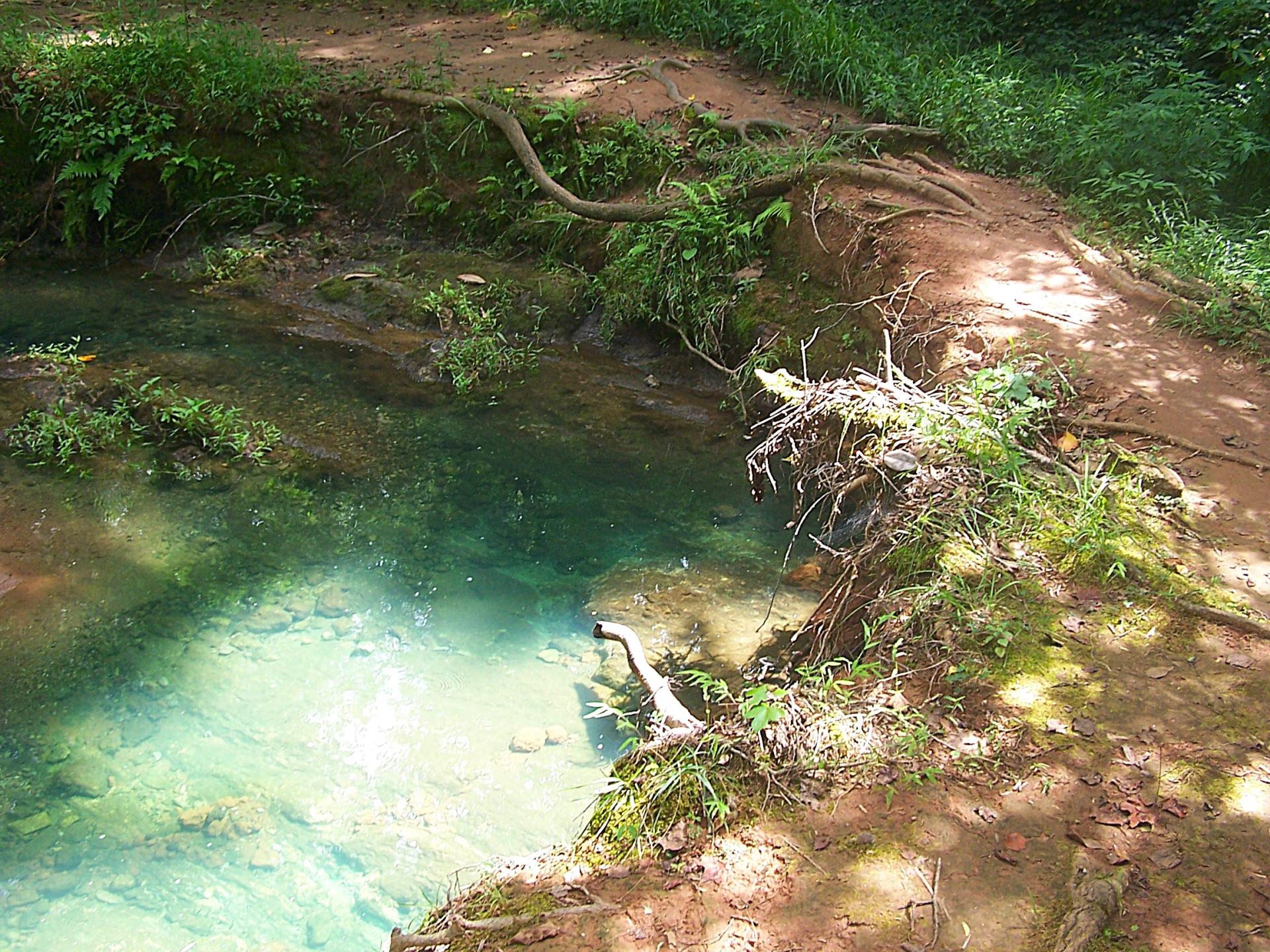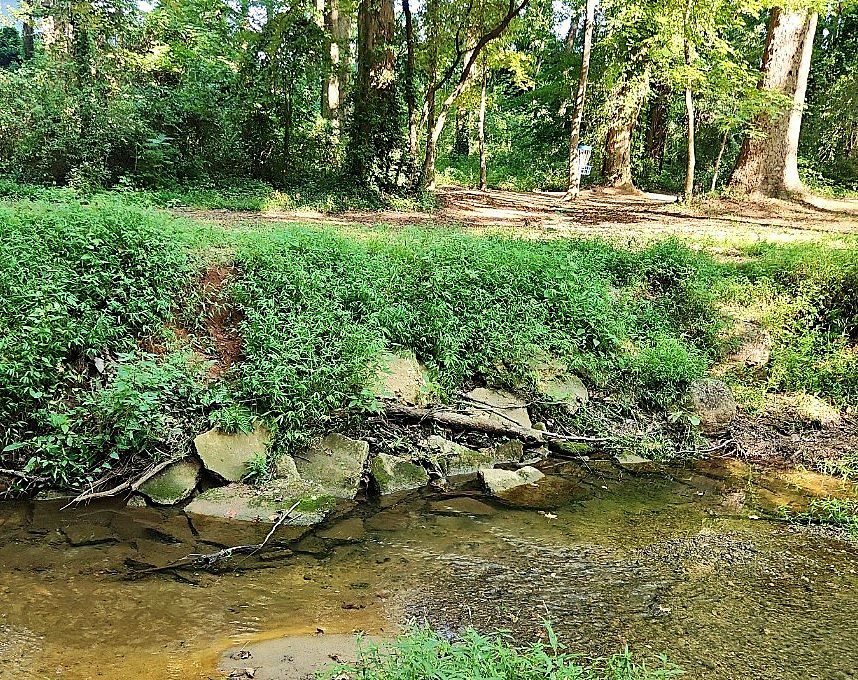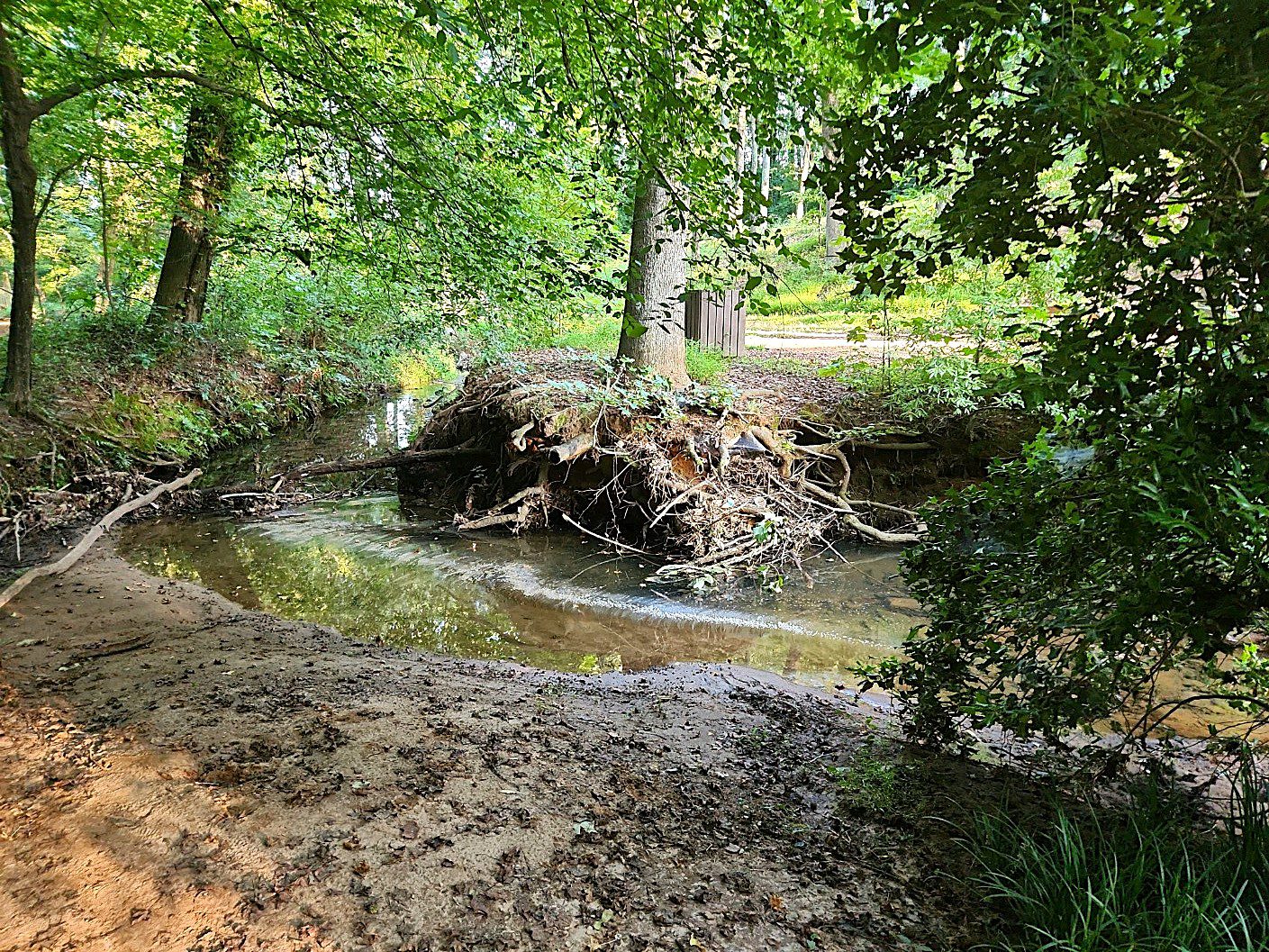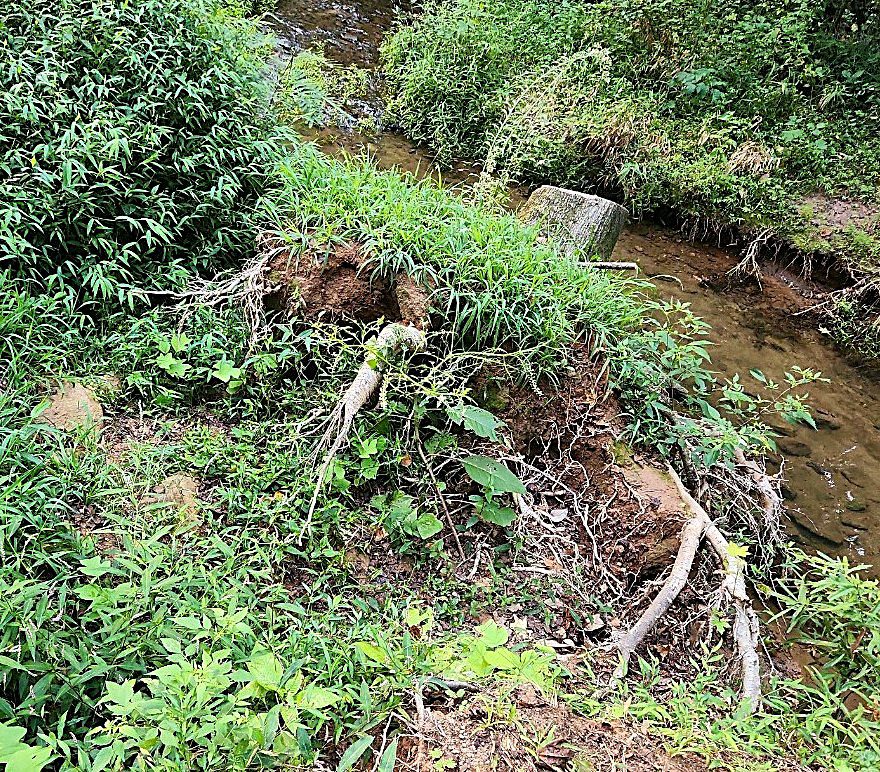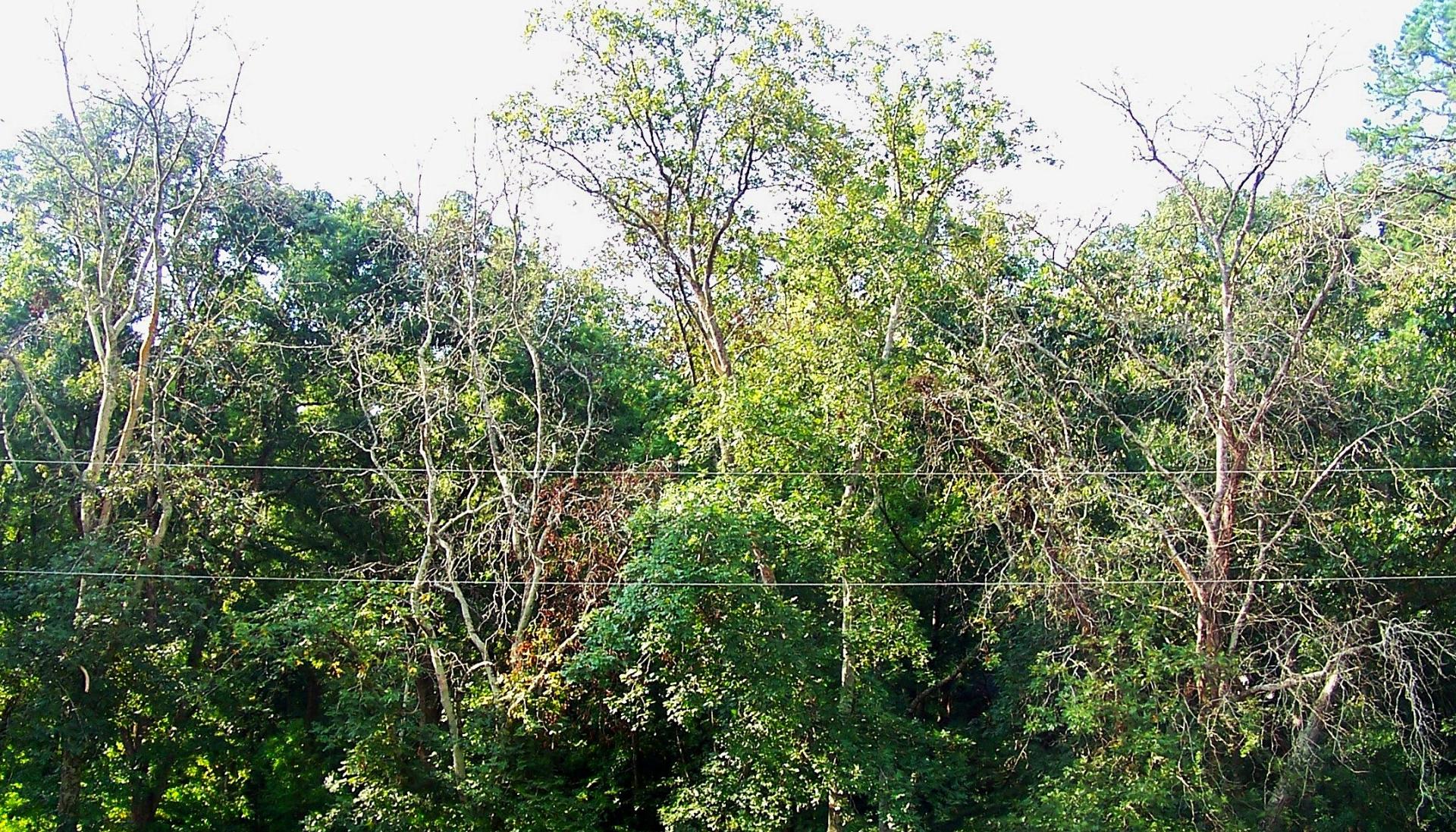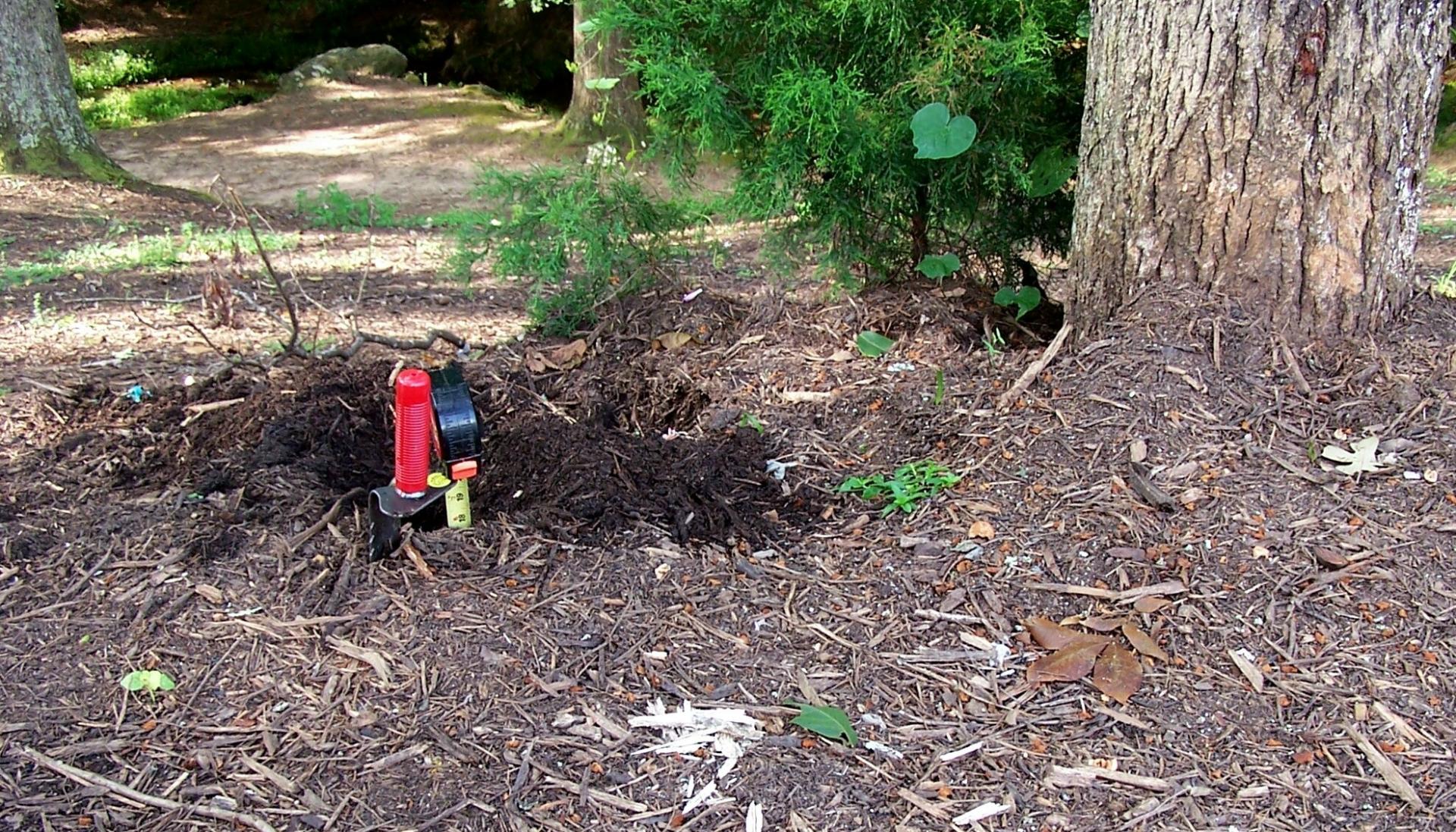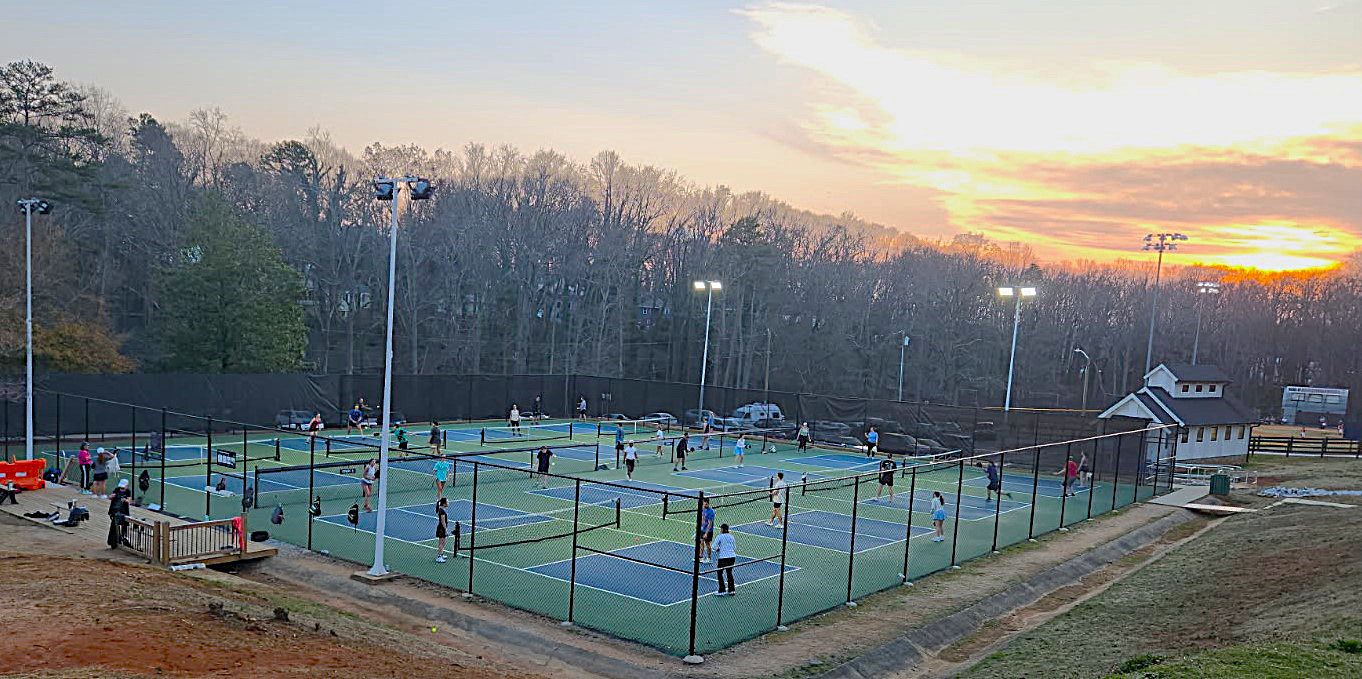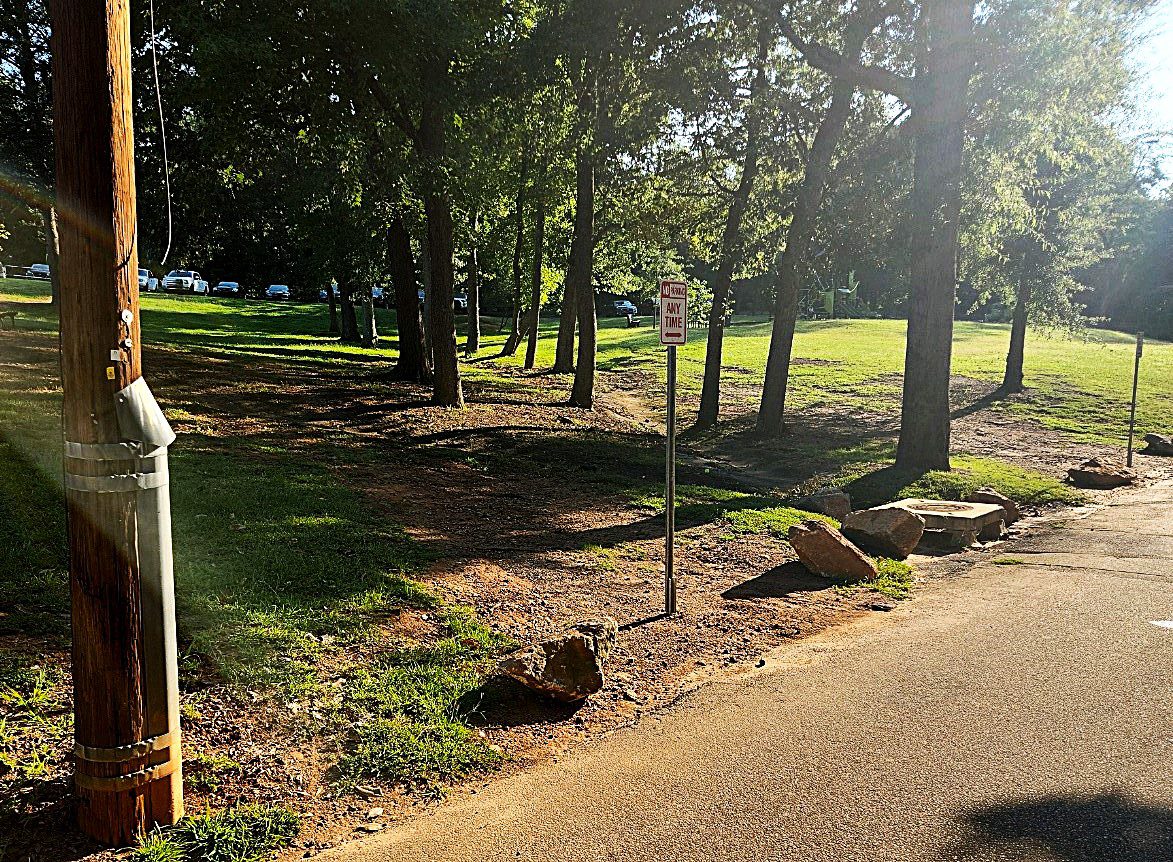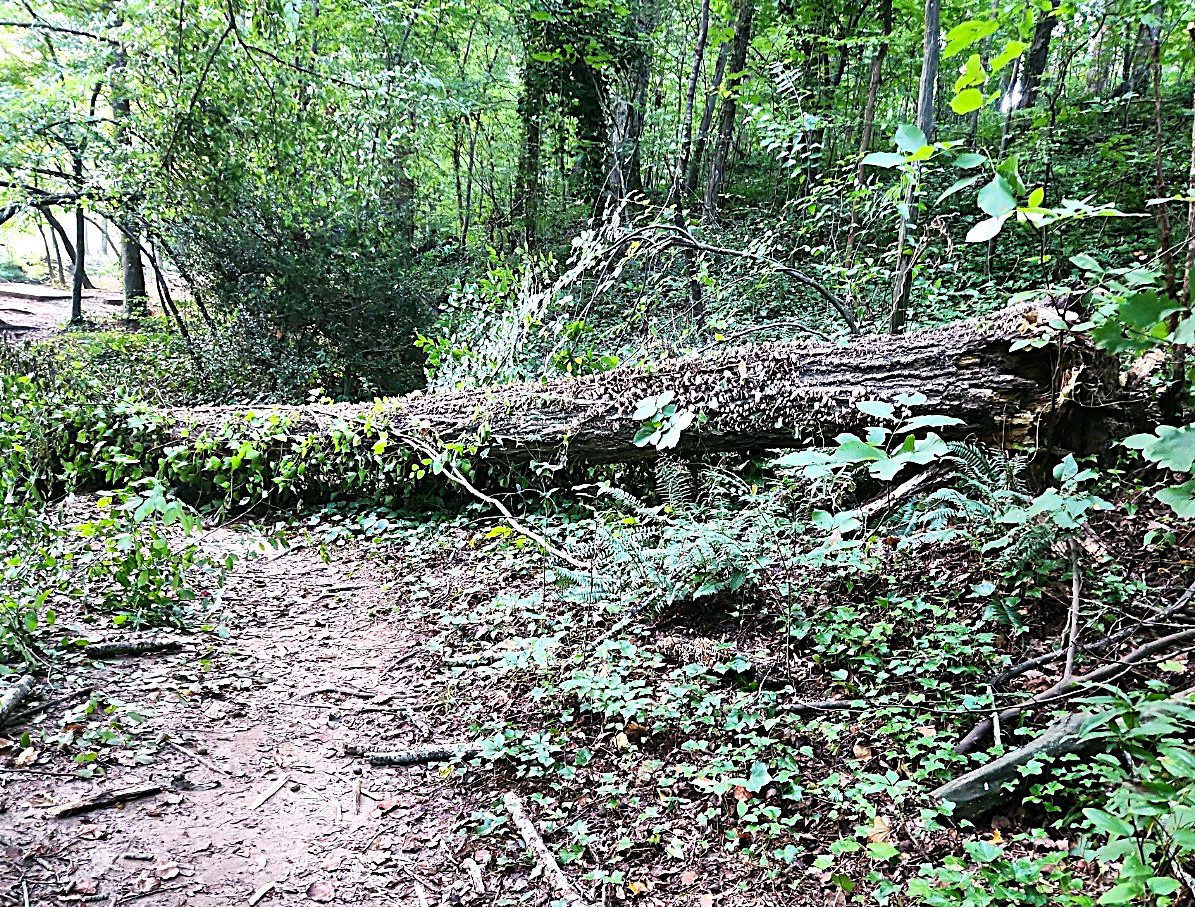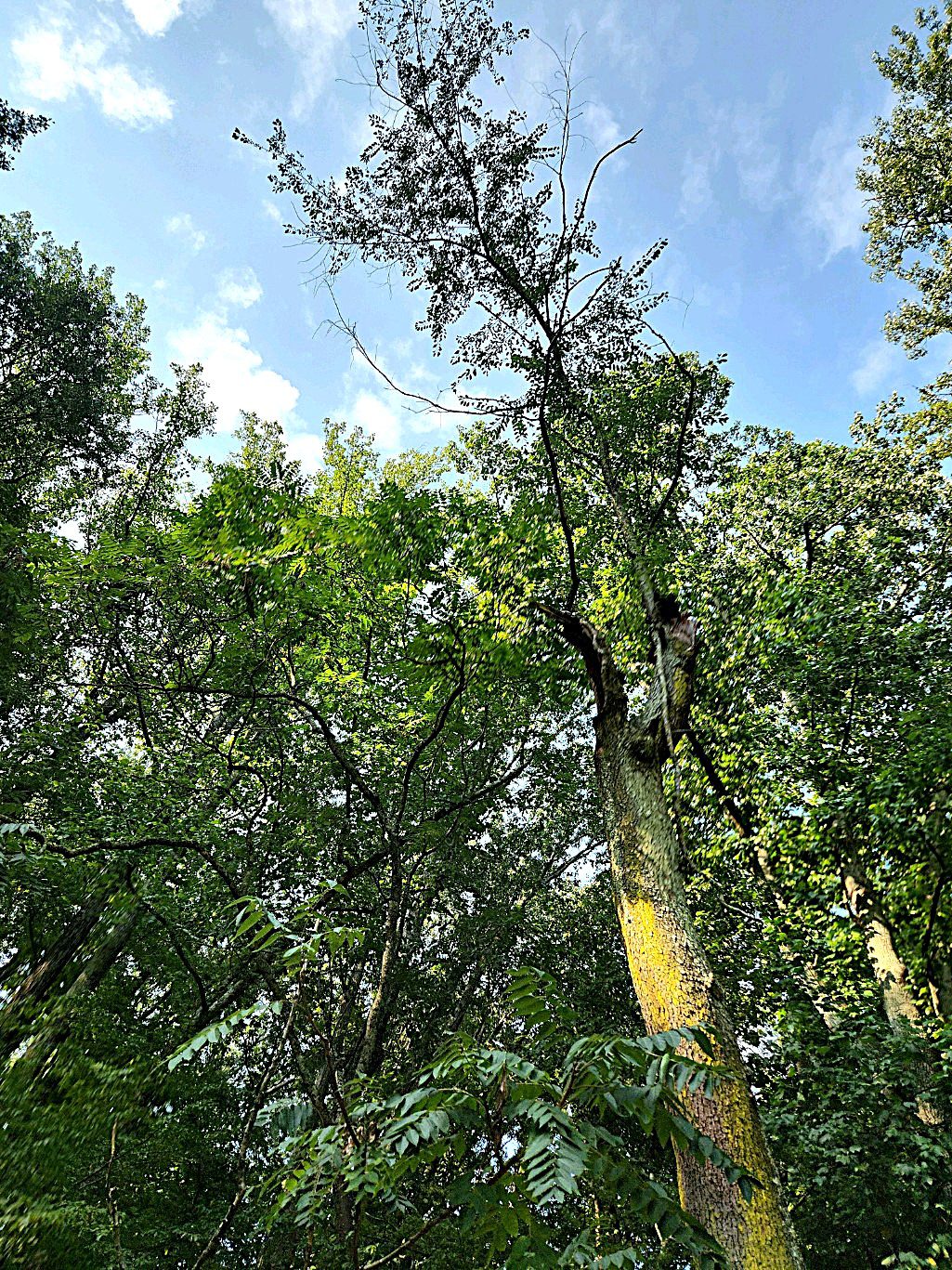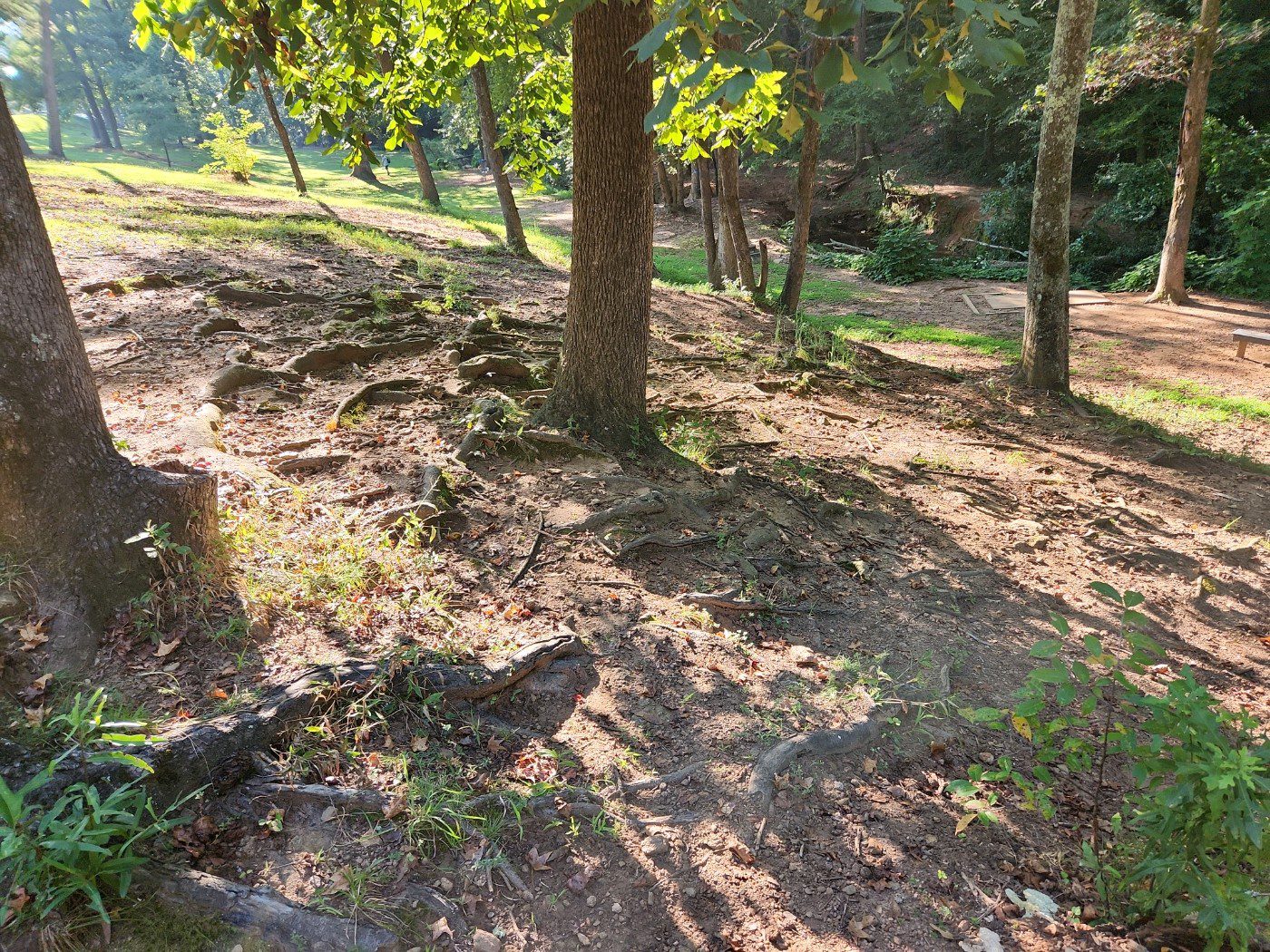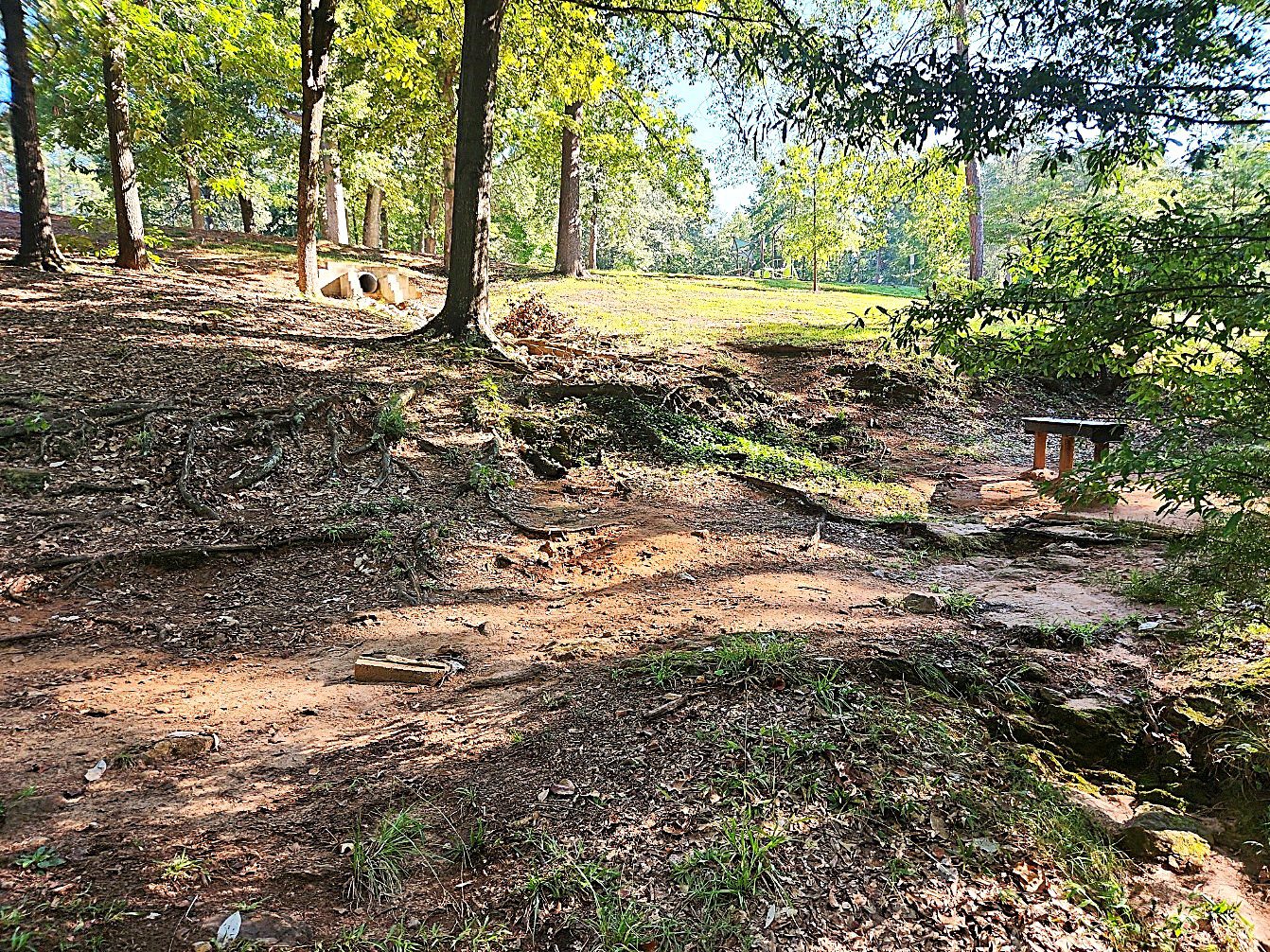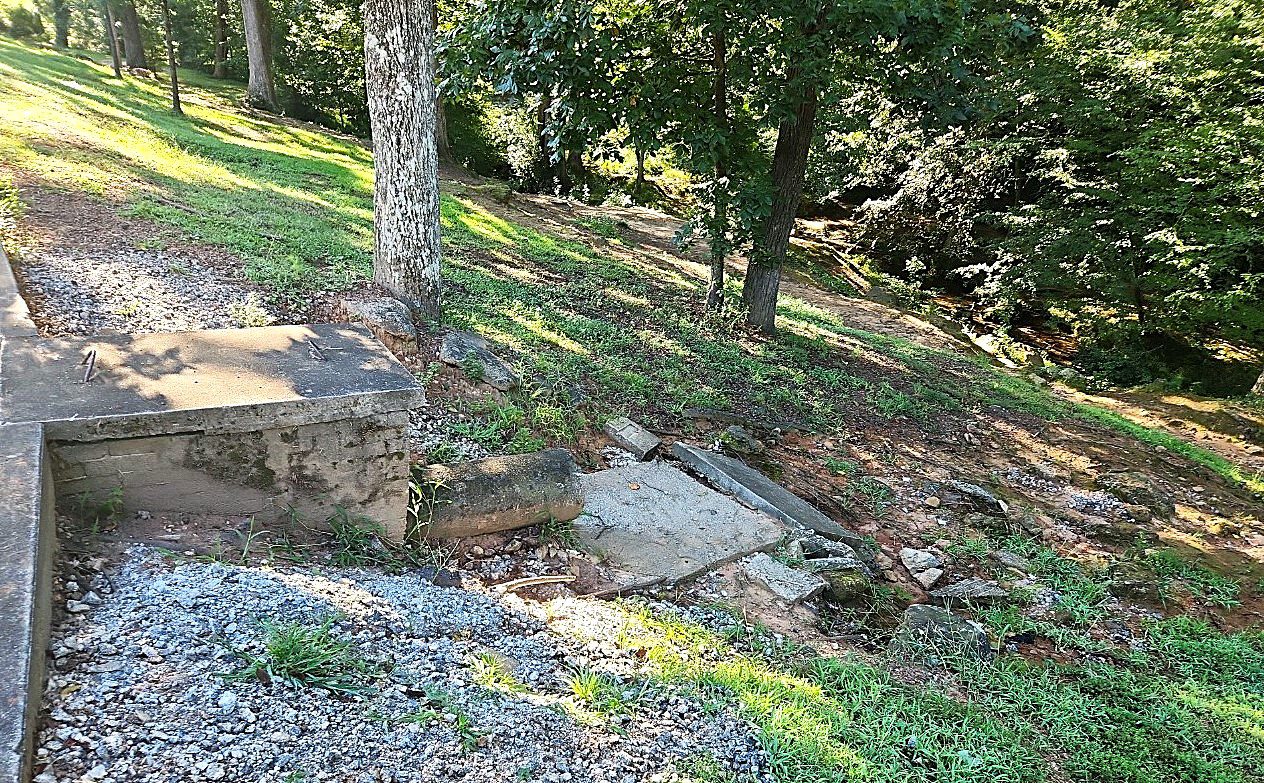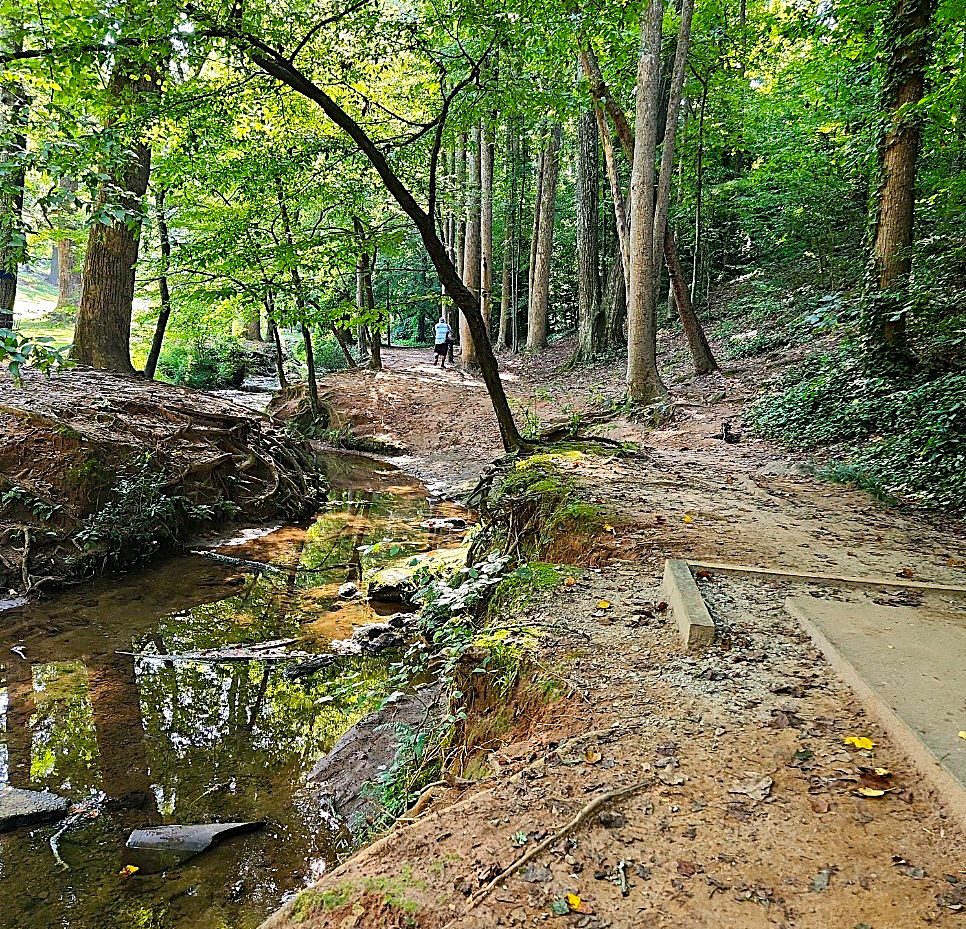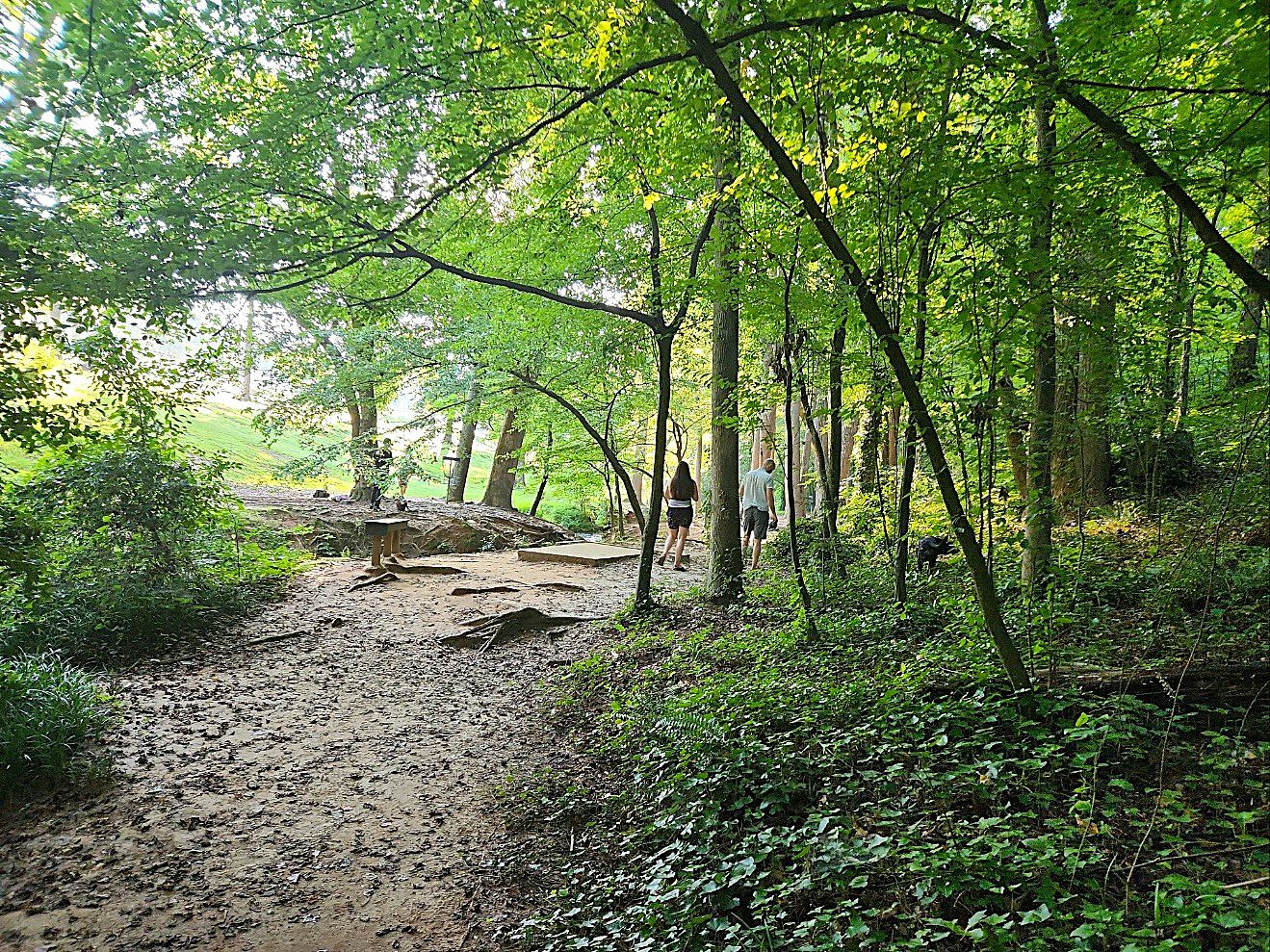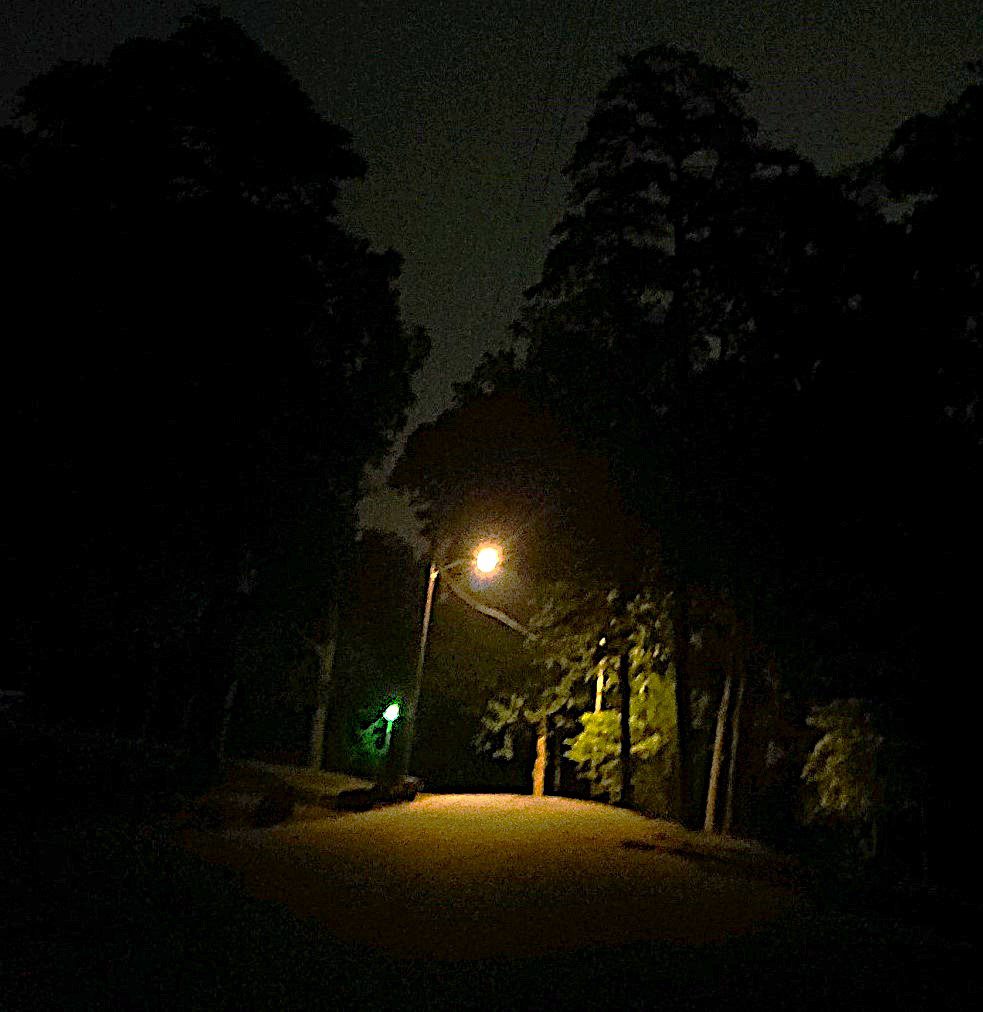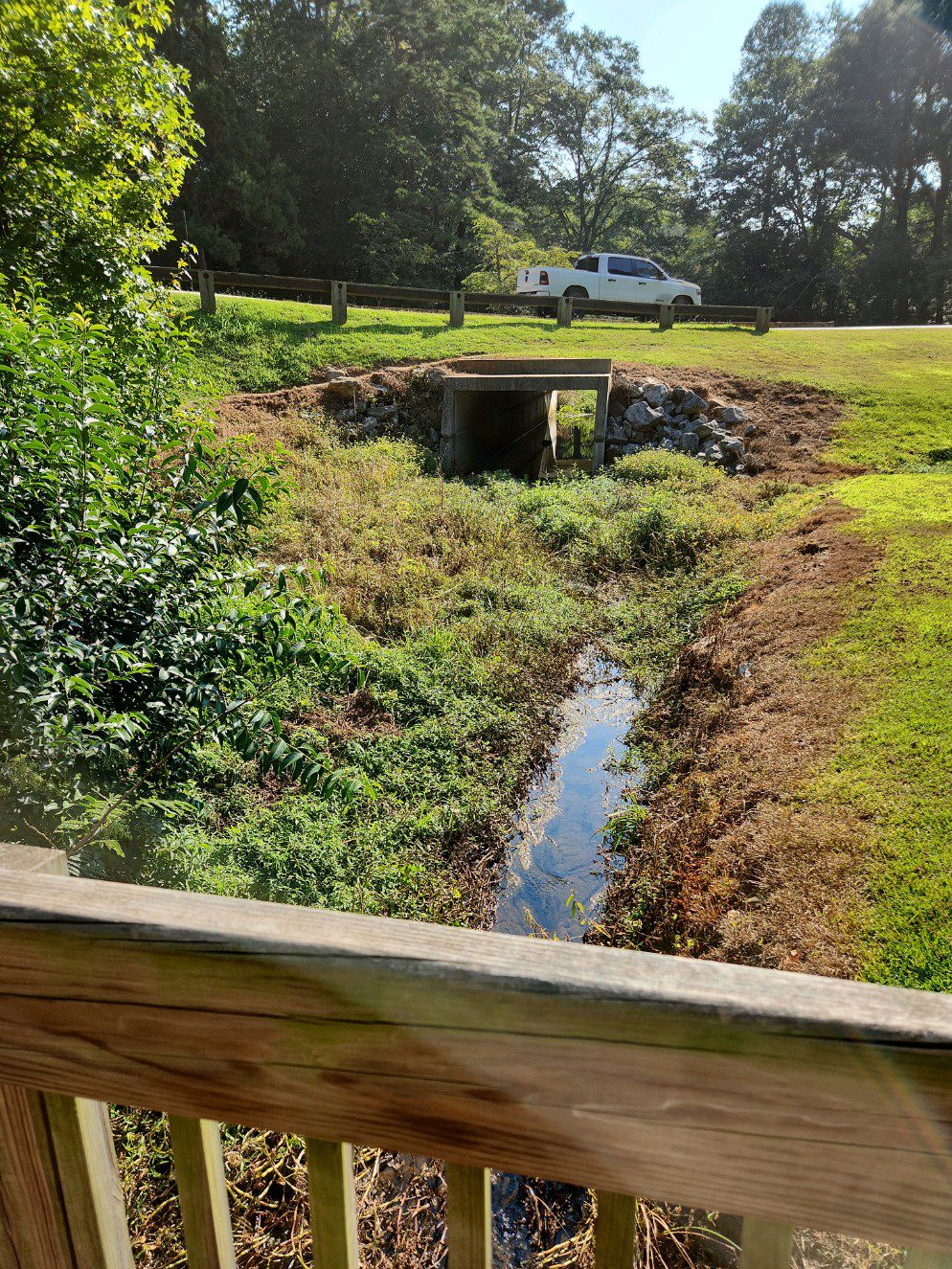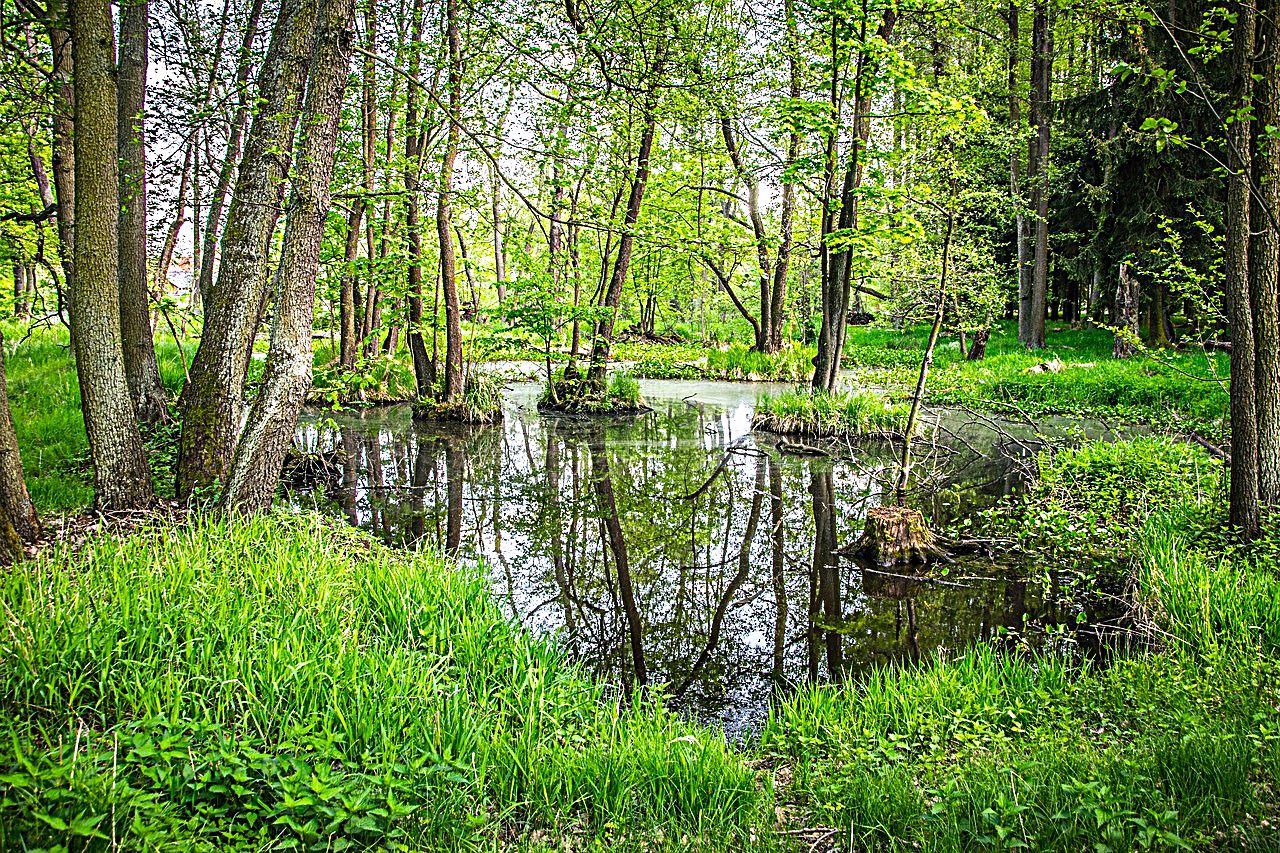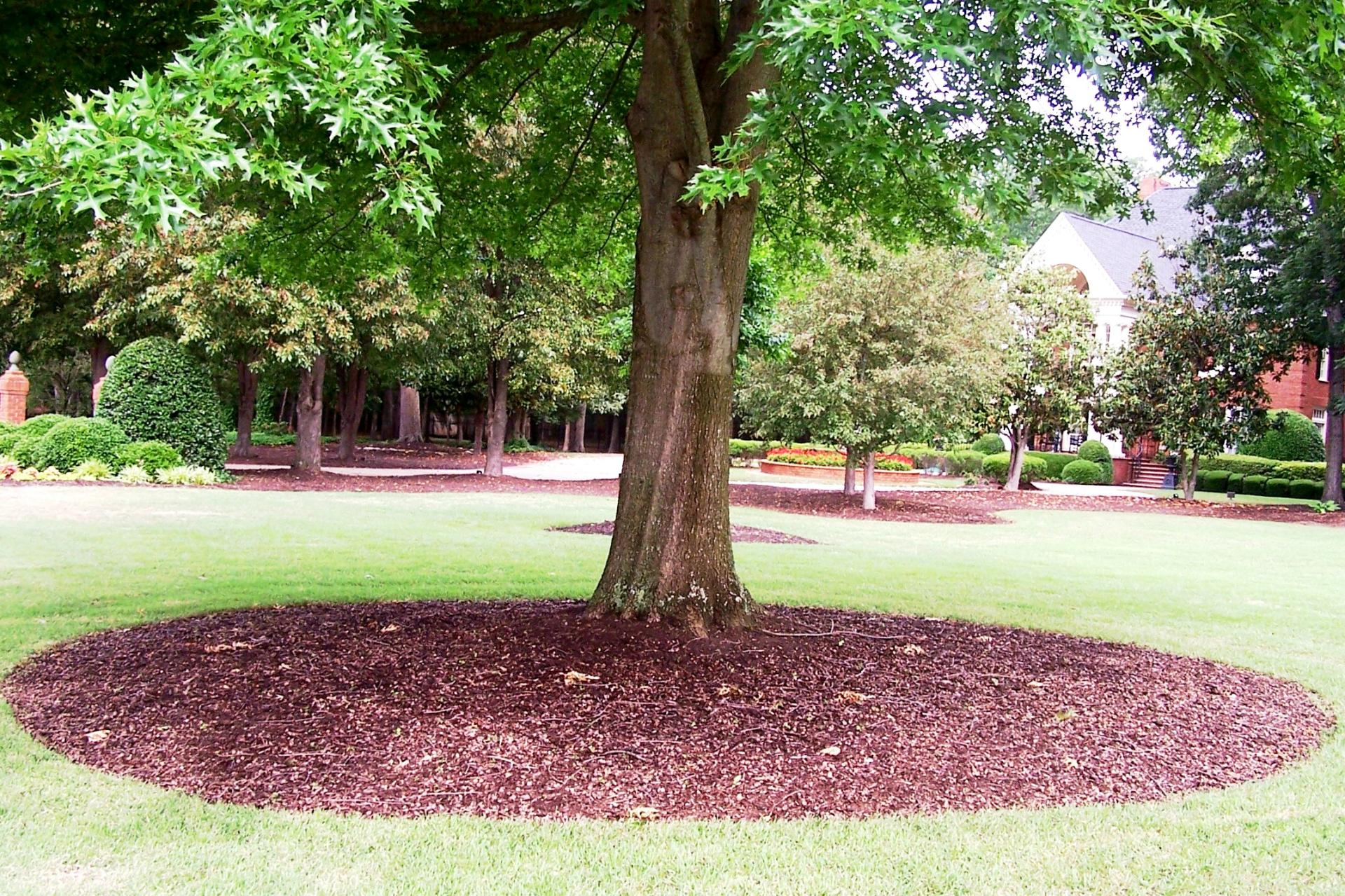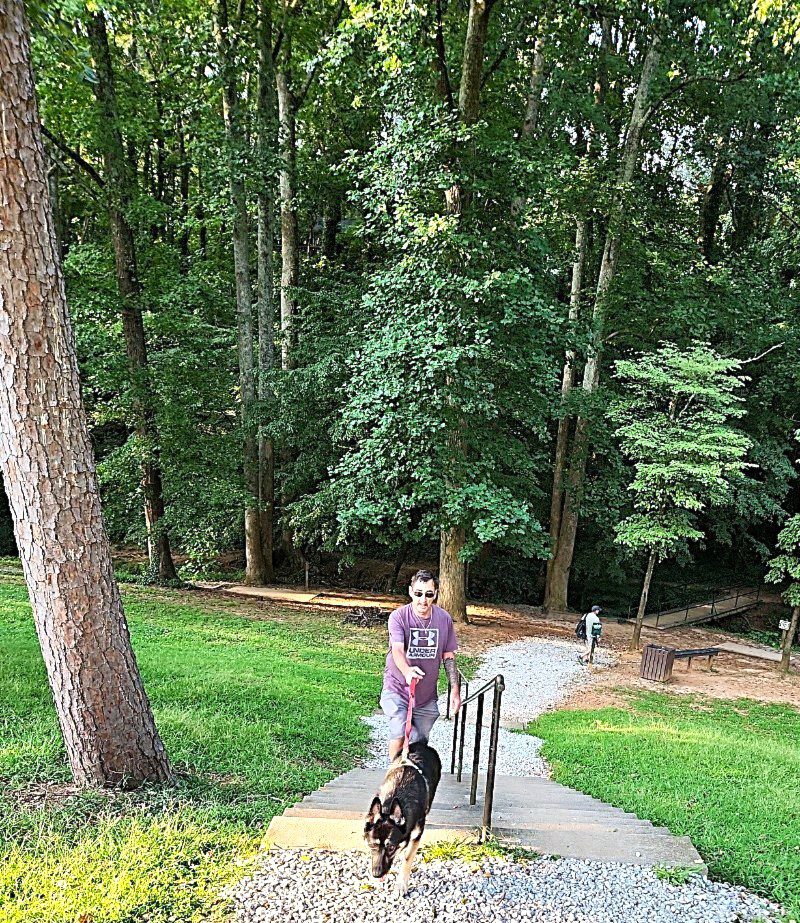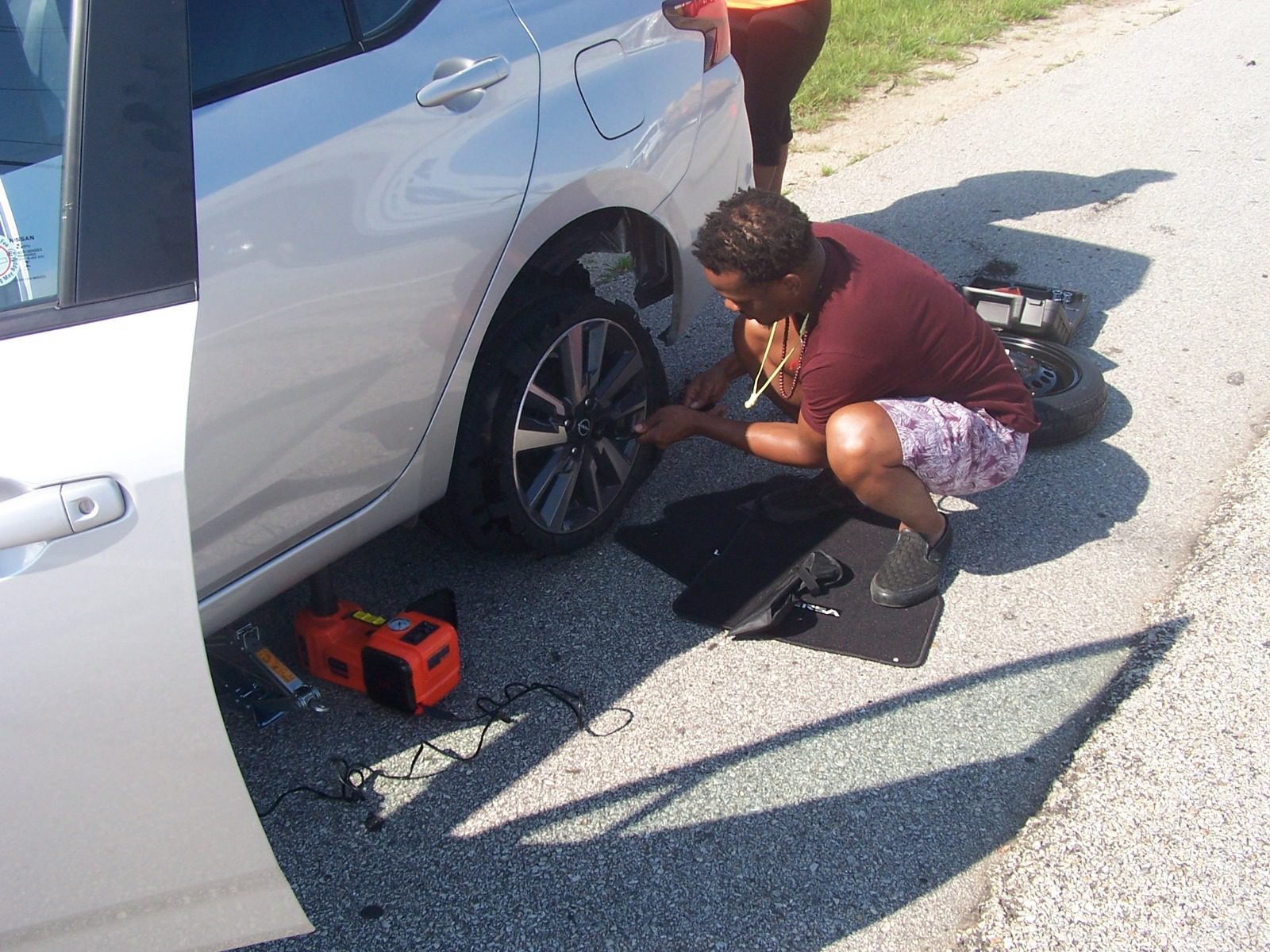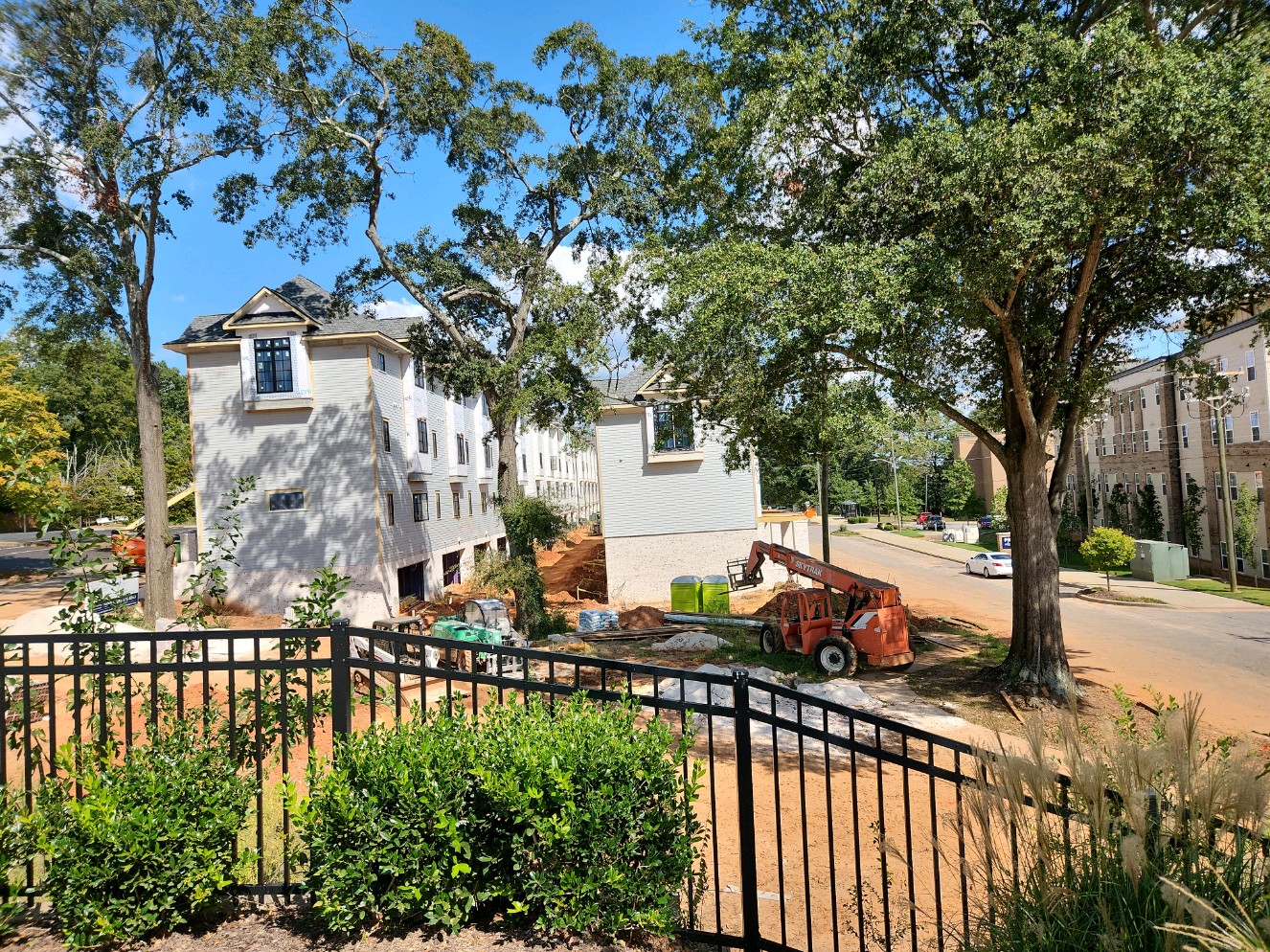The Silent Creek: A Requiem for Timmons Park
Published: March 20, 2025 Posted by: Randy Cyr Estimated reading time: 10 minutes
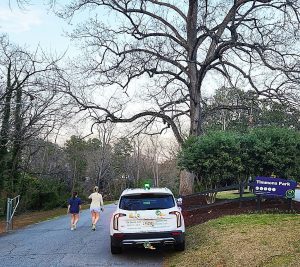
Timmons Park, about 1 mile NE of downtown Greenville, SC – just off the beaten path – is quickly gaining attention with its promotional videos.
In the autumn of 1996, I arrived in Greenville, South Carolina, carrying little more than a vision, and a resolve to redefine stewardship. I had come to abandon my tree removal ways, trading it for the refined science of preservation. My fledgling tree consultation service—the first of its kind in the Upstate—found its home near the accessibility of I-385, nestled in the Historic Overbrook District.
In the heat of the day, I pointed out to clients the ‘body language’ of trees; in the cool of the evening, I sought solace in Timmons Park. There, on a winding trail along an unnamed creek—a tributary of Richland Creek—I found sanctuary below cathedral poplars, their leaves trembling in harmony with the creek’s murmured lullabies.
Back then, the park was a tapestry of life. Ancient trees cradled its banks, its roots knitting the earth together. Squirrels scampered up trunks, songbirds trilled from branches, and children tossed breadcrumbs to darting fish. The creek, though nameless, was the park’s pulsating heart—a haven where water, wildlife, wayfarers and wonder converged.
However, mismanagement, overcrowding, stormwater flooding and user abuse have unraveled this intricate tapestry.
I am no ecologist, engineer, hydrologist, or poet. I am an arborist, and a witness to the slow death of urban greenscapes across the Upstate. Over the decades, while walking this trail thousands of times, and helping save many trees in our Upstate, I have learned this: when we sever our bond with creation, we sever something sacred. Timmons Park, once a green jewel, now bears the scars of neglect and mismanagement; a casualty of enterprise that has become detached from her moorings.
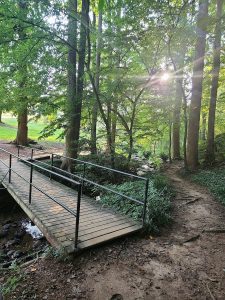
One of the few, remaining groves of trees, at the middle footbridge, in the quickwater section, reminds me of my home state of Maine.
A Creek’s Lament
Please walk with me now, through what remains.
Near the middle footbridge, a grove of poplars stands sentinel, their reflections trembling in the quickwater—a fleeting echo of my native Maine. But venture farther, and the creek’s song turns dissonant. Undercut banks gape like wounds. Naked roots claw into the air, desperate for purchase. Concrete slabs, dumped haphazardly to stem erosion, lie like tombstones in the mud. Stormwater pipes vomit runoff, carve gullies, expose rocks, unearth roots, and suffocate the creek with silt.
Here, a tulip poplar—once a towering titan—lies toppled, its roots stripped bare by torrents of floodwater. There, a dogwood skeleton, starved by compacted soil, bears the scars of flying frisbees. The earth, trampled into barren clay, repels even invasive weeds.
In place of grass, remains mud. Does the maintenance crew wonder why there is less grass to mow each year?
The disc golf course, with its 18 holes and its unrelenting foot traffic, from tee to basket, over the creek’s banks, and up and down the hill, has turned the footpath into a muddy expressway, and the forest floor into a wasteland.
How long has it been since you’ve seen a pitcher plant? An Indian paintbrush? Or even a riparian zone?
And the noise—the unrelenting thwack of pickleballs, the impervious courts marshaling rain down the hillside and into an overburdened creek, the silence where frogs once chorused. Blue herons have fled. Squirrels are rare. Owls no longer hoot. Crickets no longer chirp. Butterflies no longer flutter. Dragonflies no longer hover. Students no longer swing in hammocks. Picnickers no longer spread blankets. The creek, choked and nameless, flows on, an effigy of itself.
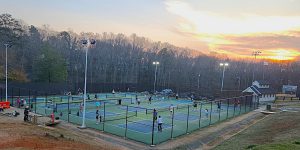
Conveniently situated in the center of this small park, the jarring sound of the paddle striking ball is inescapable. Even the falling water of the unnamed creek cannot drown it out.
The Unseen War
Soil compaction – primarily caused by foot traffic – is the silent assassin of urban trees. It deprives roots, worms and beneficial microbes of oxygen, water, and life. Crowns thin, unnoticed, branches dieback, inconspicuously. Signals of distress discounted. Invasive vines—kudzu’s green stranglehold—cloak decaying trunks. Stormwater, unbuffered by riparian zones, rages downstream, scouring banks, and toppling trees. Another sentinel has fallen. Without ceremony or concern. Cleanup on aisle 46!
We paved paradise, then wondered why it flooded.
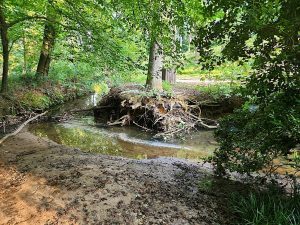
Stormwater runoff has eroded away this poplar’s root ball, while in her wake, loose branches, soap film and silt.
A Path Forward
This need not be an epitaph. The solemn procession to decimation need not continue.
We can reclaim Timmons Park. Restore her creek’s banks and riparian zones (within the park, as well as upstream), with soil, rock, logs, tree root-balls, trees, shrubs, ferns, grasses, herbs, and geotextiles. Relocate disc golf away from the creek’s fragile embrace. There remain both open and wooded areas that can easily house relocated holes and golfers. It’s relatively easy and inexpensive. Return the trail to the footslogger, the flora and the fauna.
Replace asphalt with permeable millings, let soil breathe again. Properly mulch all trees in common areas—not with suffocating mounds, but with care, and its largest – the noble giants – rope-fence off near the branch dripline (furthest extent of branches) to protect people from shedding branches and the root zone from compaction due to foot traffic. Let’s treat the rootzone as sacred ground.
Eradicate invasive plants and use pea gravel when foot paths must cross a tree’s critical root zone. Install tree guards on the few remaining, understory dogwood and hornbeam, to protect the thin bark on their exposed lower trunk, in the path of speeding discs. Plant properly new dogwoods, redbuds and rhododendrons.
Name the creek. Adopt it. Cherish it. Fight for it.
Move the pickleball courts to Cleveland Park’s sprawling grounds where there is more room for parking. Return tennis to Timmons Park. Relocate the stormwater and sewage pipes around or below ground of the park. Let logs anchor pools, not threaten bridges. Listen to those who remember the park’s glory—the elders, the creek, the trees, the soil.
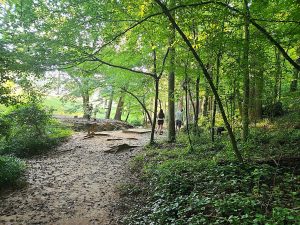
This park boasts as Greenville’s only 18-hole disc golf course. The ground has become so compacted that not even invasive plants can grow on these expanded footpaths.
Epilogue: A Call to Roots
As long as disc golfers tally score and pickleballers rally, the park will hum with human joy. But beneath the laughter, the land grieves. A skatepark looms; asphalt parking will likely expand. Yet without trees, without the creek’s whispered wisdom, what draws us here?
This is not progress. It is Amnesia.
We possess the power to rewrite this story. To honor the covenant between soil and soul. To let the creek—nameless no longer—sing again.
The Green Tree Doctor is the Upstate’s first Board Certified Master Arborist, a steward of 1 million trees, and up until now, mostly a silent witness to the wars waged in urban trees and soil. Join the fight at Green Tree Doctor and our new nonprofit, The Green Line.
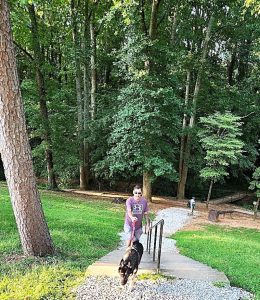
Wouldn’t it have been nice if those who have grown up here would have been invited to the planning committees?


